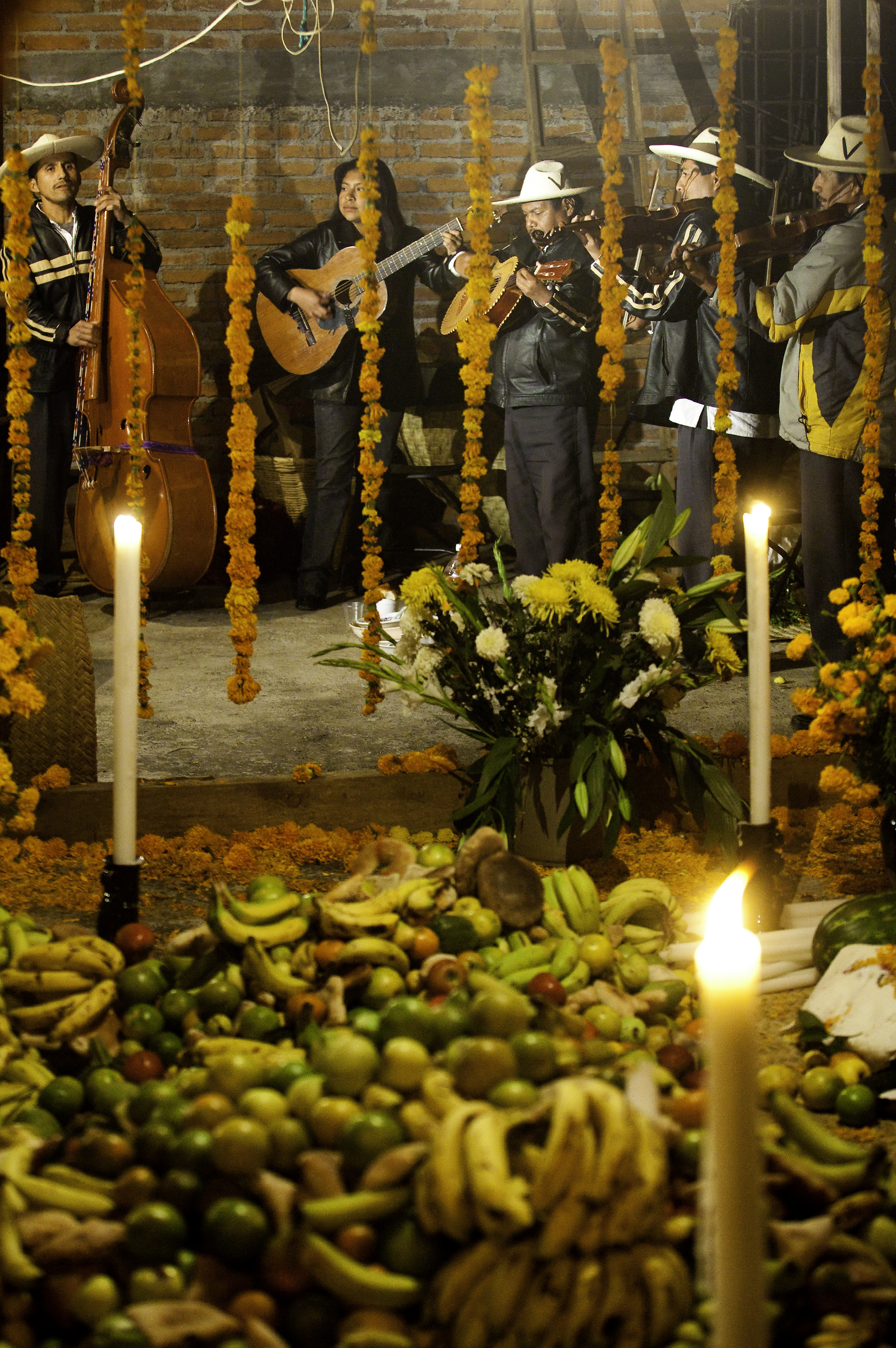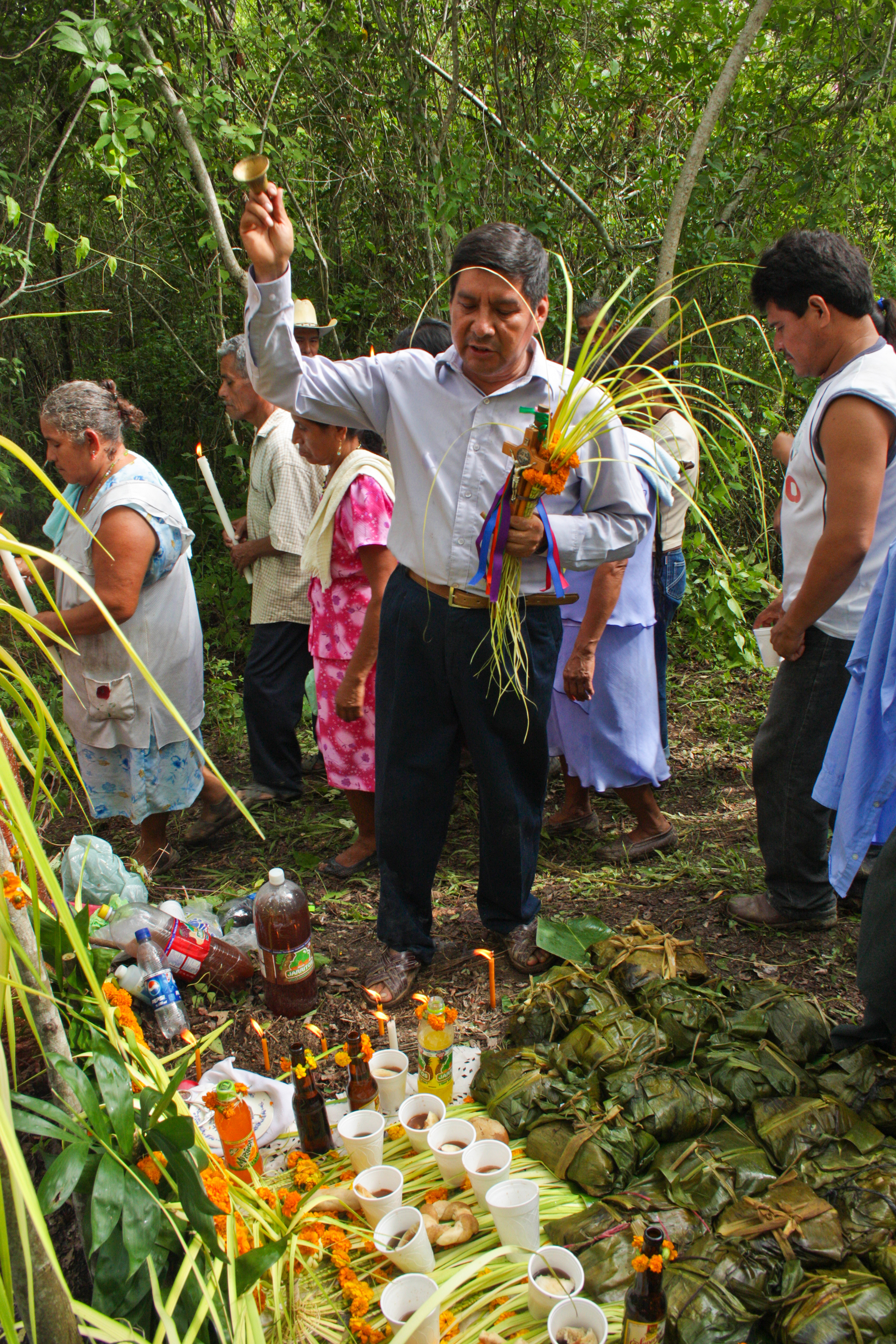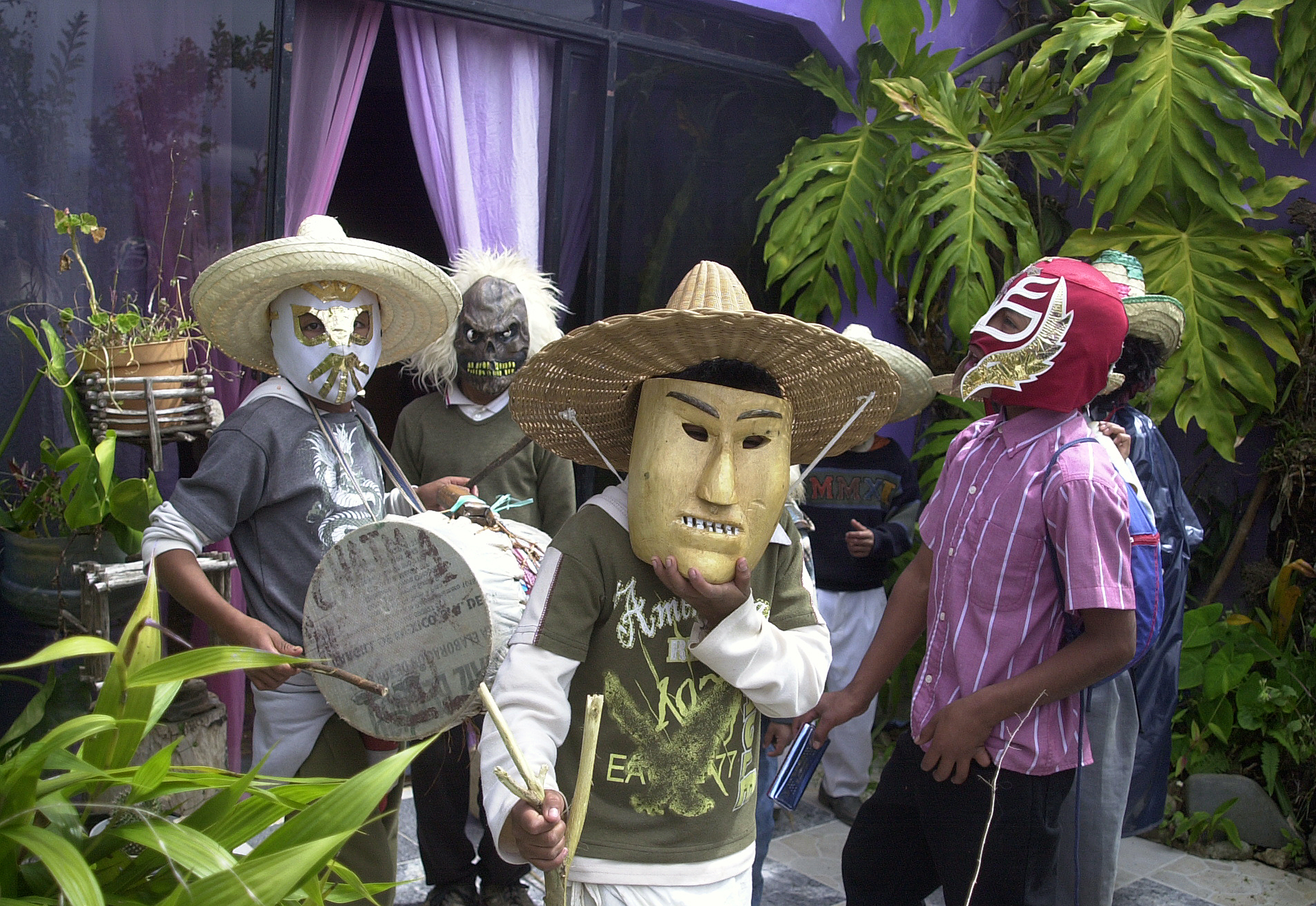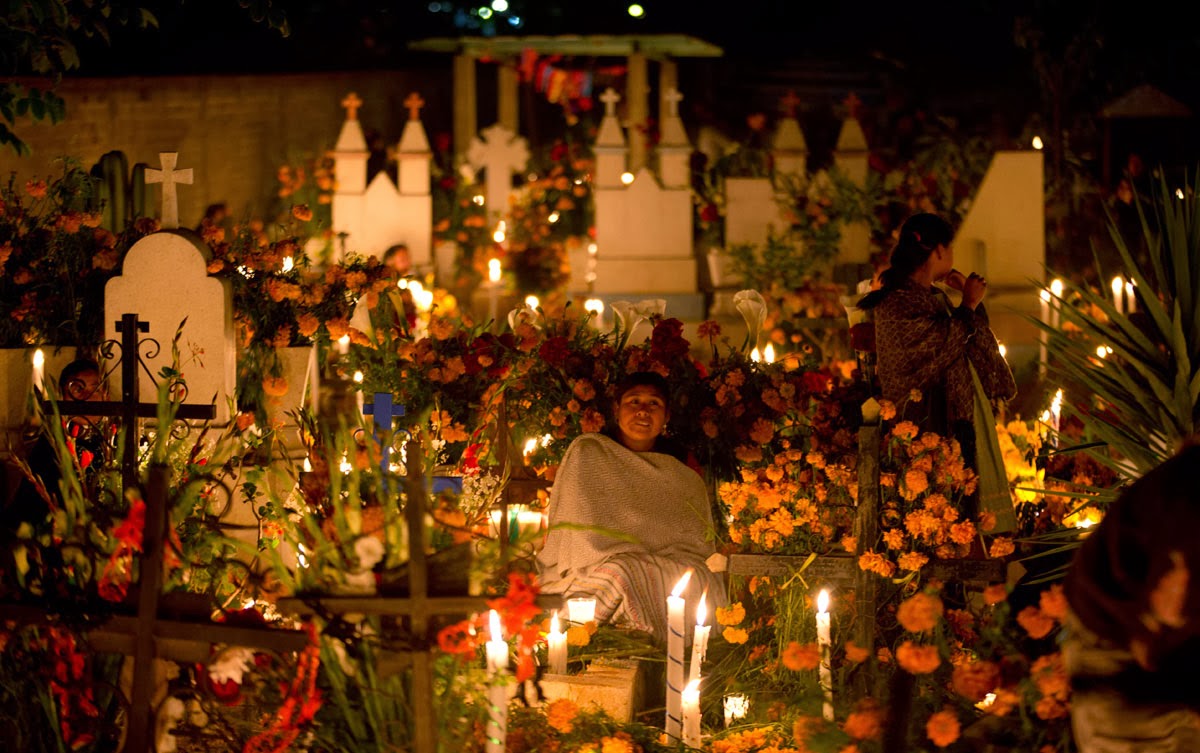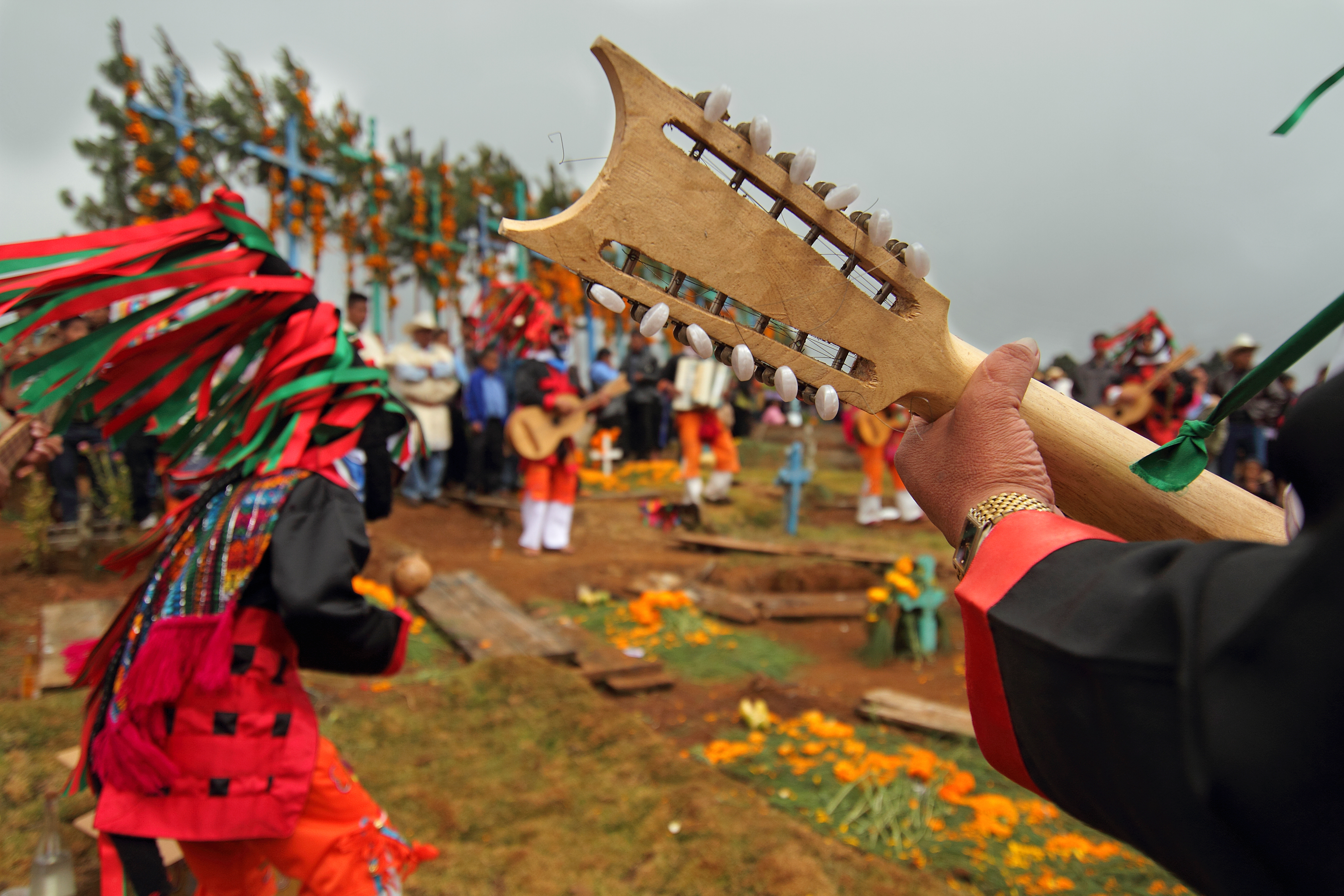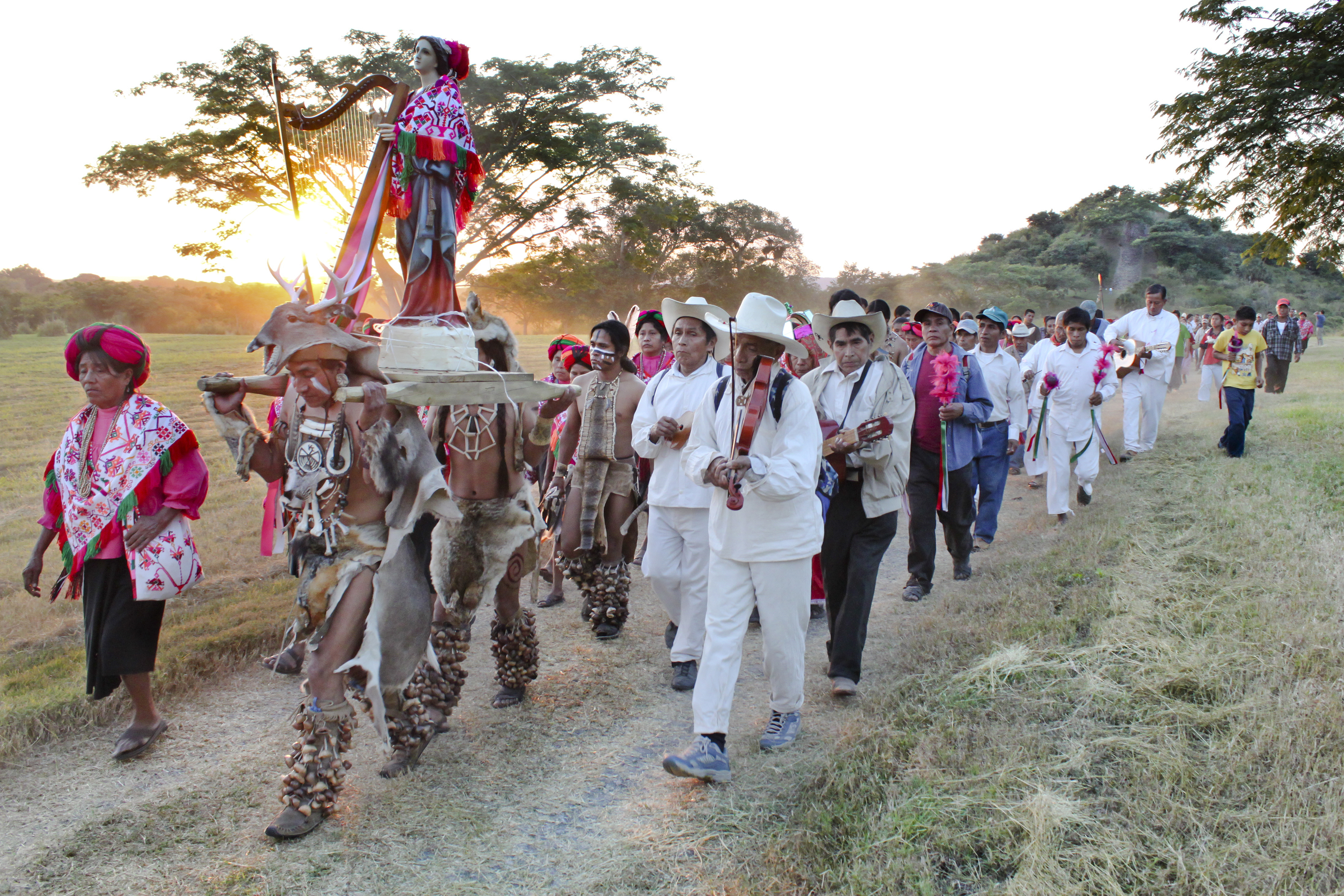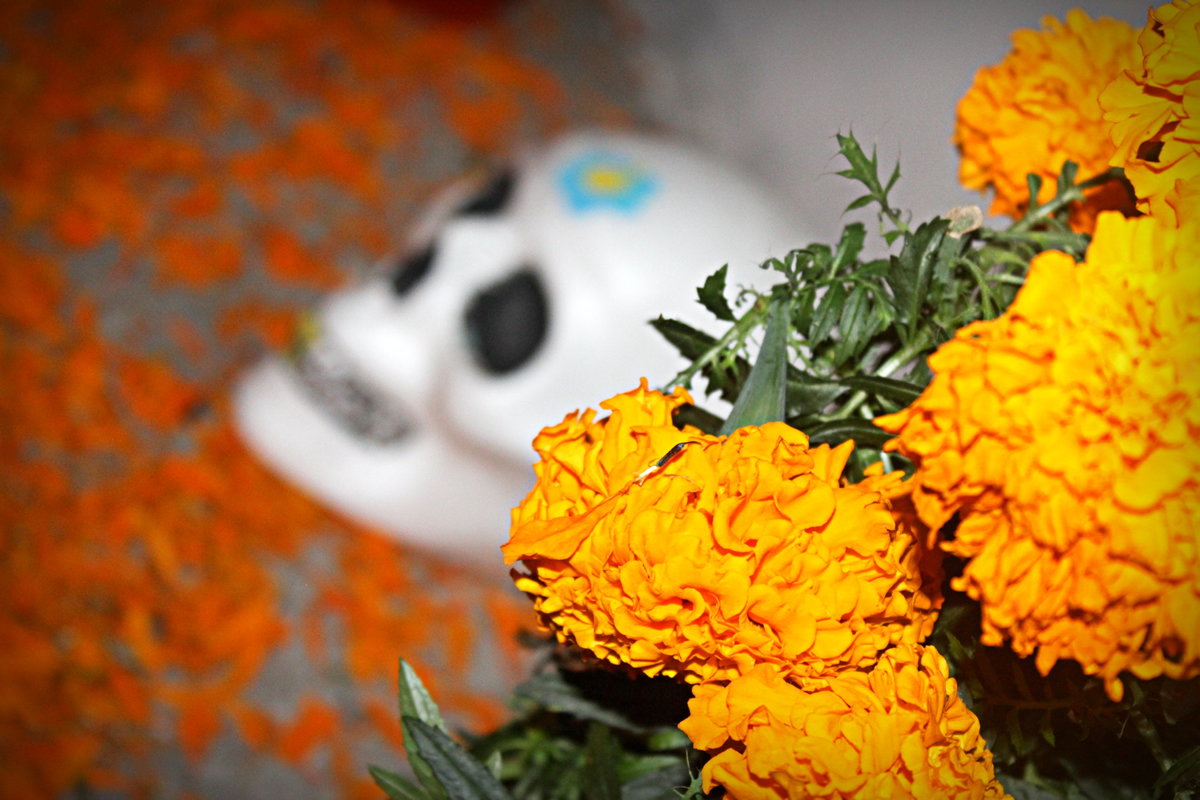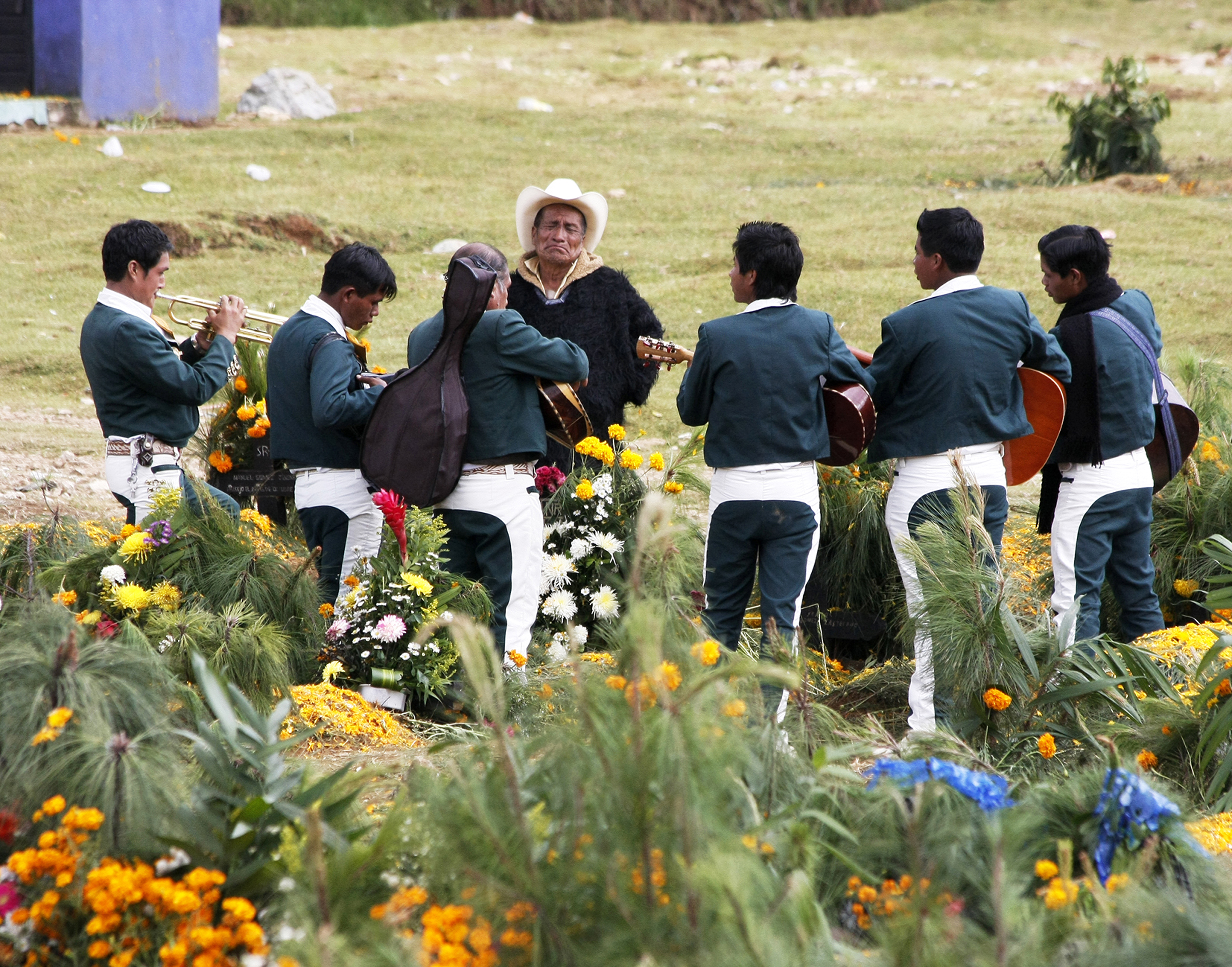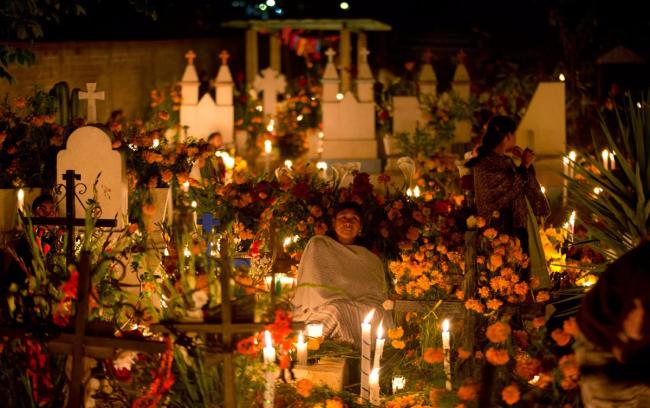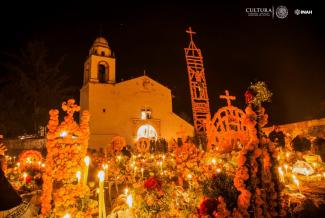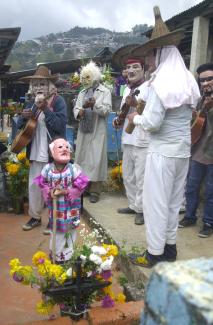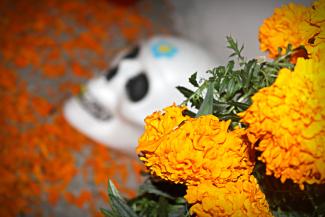Las fiestas indígenas dedicadas a los muertos
Las fiestas indígenas dedicadas a los muertos

World Heritage
Intangible
Usos sociales, rituales y actos festivos
Every year at the end of the annual corn cycle, Mexico's indigenous communities celebrate the Day of the Dead with festivities, marking the temporary return of their ancestors' souls to Earth. This ceremony reaffirms the role of individuals in society and reinforces the sociopolitical status of ethnic groups. On specific days, they scatter flower petals and place candles and offerings from their homes in the cemetery, while offering food on altars and graves decorated with flowers, symbolic objects, and paper silhouettes. The symbolic background and religious rites of these celebrations are associated with pre-Hispanic and European beliefs.
The celebration of death is one of the most profound and dynamic traditions that transcends as one of the most representative social events of community life in Mexico. The ceremonial ritual of the Day of the Dead has been built up over the centuries with contributions from indigenous peoples, Catholicism, rural areas, and urban groups, but the roots are one: the vision of the ancient inhabitants of present-day Mexico who perceived that by celebrating or remembering the dead, they were in contact with the sacred, with the underworld populated by mythological beings who struggled between the human and the divine.
On the other hand, the celebrations also provide a space for the reproduction of different expressions within the various fields of intangible cultural heritage: symbolic architecture, plastic arts, ceremonial techniques and handicrafts, traditional funeral music, pictorial art, poetry, dance, popular narrative, etc.
Thus, the appreciation of mortuary and commemorative practices around the Days of the Dead in our country is seen as part of a model of the past that is inseparable from the interpretation of the present.
The Day of the Dead festival, as practiced by Mexico's indigenous communities, celebrates the temporary return of deceased family members and loved ones to Earth. These celebrations take place every year between late October and early November, coinciding with the end of the annual corn cycle, a crop that is fundamental to the life of these communities.
To facilitate the arrival of the souls, families trace a path with flower petals, candles, and offerings from their homes to the cemetery. The deceased's favorite foods are carefully prepared and placed on the family altar and grave, accompanied by flowers, handicrafts, and paper silhouettes. These preparations are carried out with great care, as it is believed that the deceased can bring prosperity—such as a good corn harvest—or, conversely, cause misfortune in the form of illness, accidents, or economic hardship, depending on their degree of satisfaction with the fulfillment of the rites.
The dead are remembered on different dates according to categories that correspond to the cause of death, age, sex, and, in some cases, profession. This annual gathering between the living and their ancestors fulfills a crucial social function: it reaffirms the role of each individual in the community and reinforces the political and cultural status of indigenous peoples. In regions such as the Maya, Nahua, Zapotec, and Mixtec, these practices are not only part of ceremonial and festive life, but are fundamental to the identity, worldview, and social life of these peoples.
These festivities are key moments of encounter between the living and the dead, but also of social interaction among community members. Over several days, preparatory activities and rituals are carried out that strengthen family and collective ties.
Anthropological and historical studies have shown that these celebrations have deep historical roots and reflect a great contemporary diversity, which is a product of Mexico's ethnic and cultural richness. There are more than 60 indigenous groups in the country whose traditions have been mixed over time with African, Asian, and European influences.
Examples of this diversity include:
- Nahua Huastecos: festive celebrations with a carnival-like character.
- Chontales of Tabasco: intimate rites in which the dead remain in their homes for a month.
- Maya of the lowlands: solemn and respectful commemorations.
Finally, these practices have shaped a rich symbolic and ritual architecture, which manifests itself in ephemeral expressions such as:
- Cempoalxóchitl arches.
- Offerings with cosmogonic significance.
- Ceremonial food.
- Ritual spaces.
- Music, dance, and song.
Declaratoria UNESCO

Patrimonio Intangible
Categioría Usos sociales, rituales y actos festivos
Fecha 2008
Criterios de valor Universal Excepcional
Este lugar cumple con los siguientes criterios de valor Universal Excepcional


